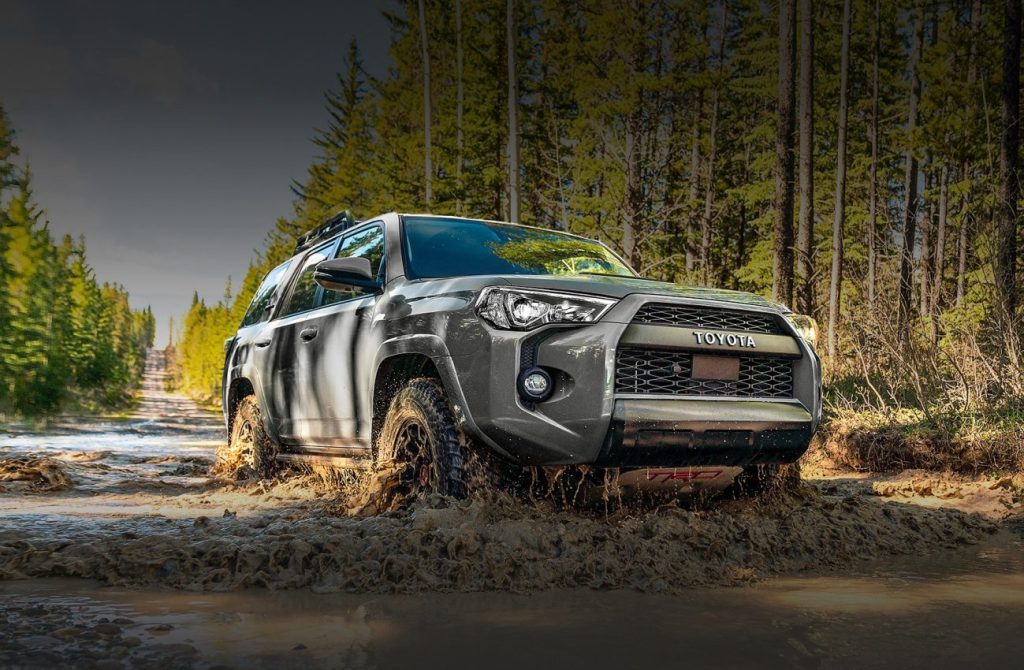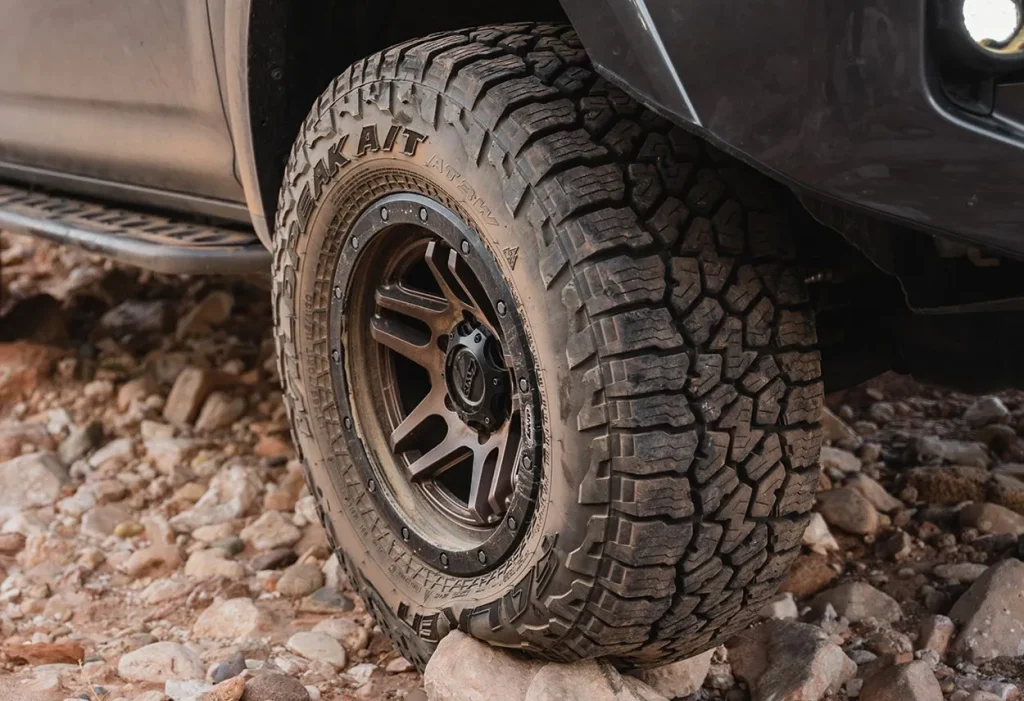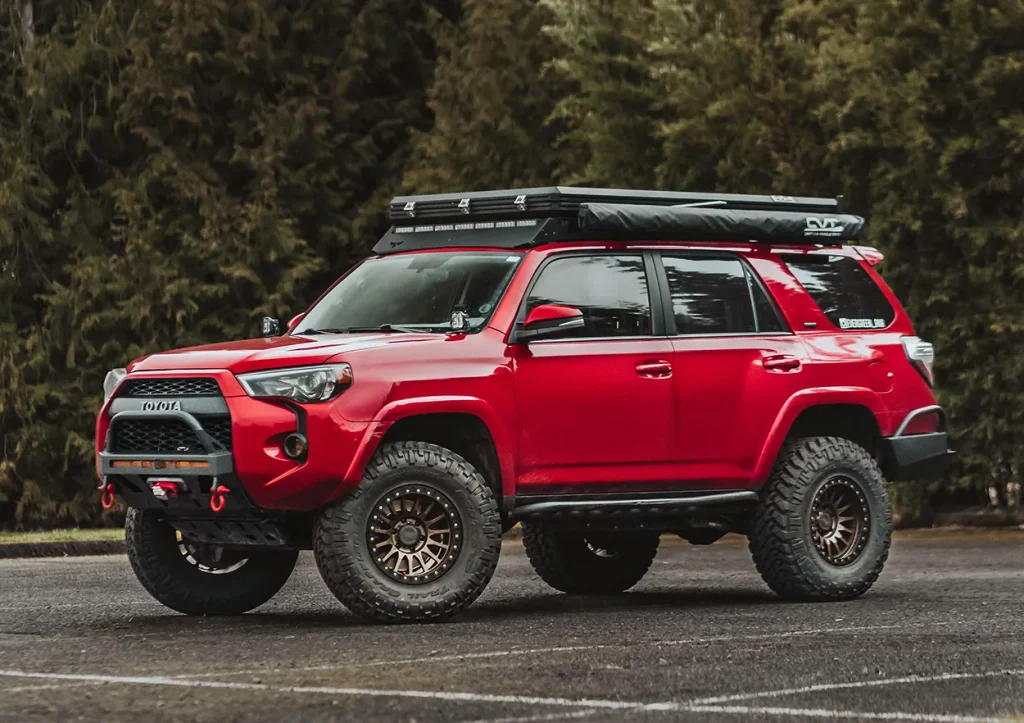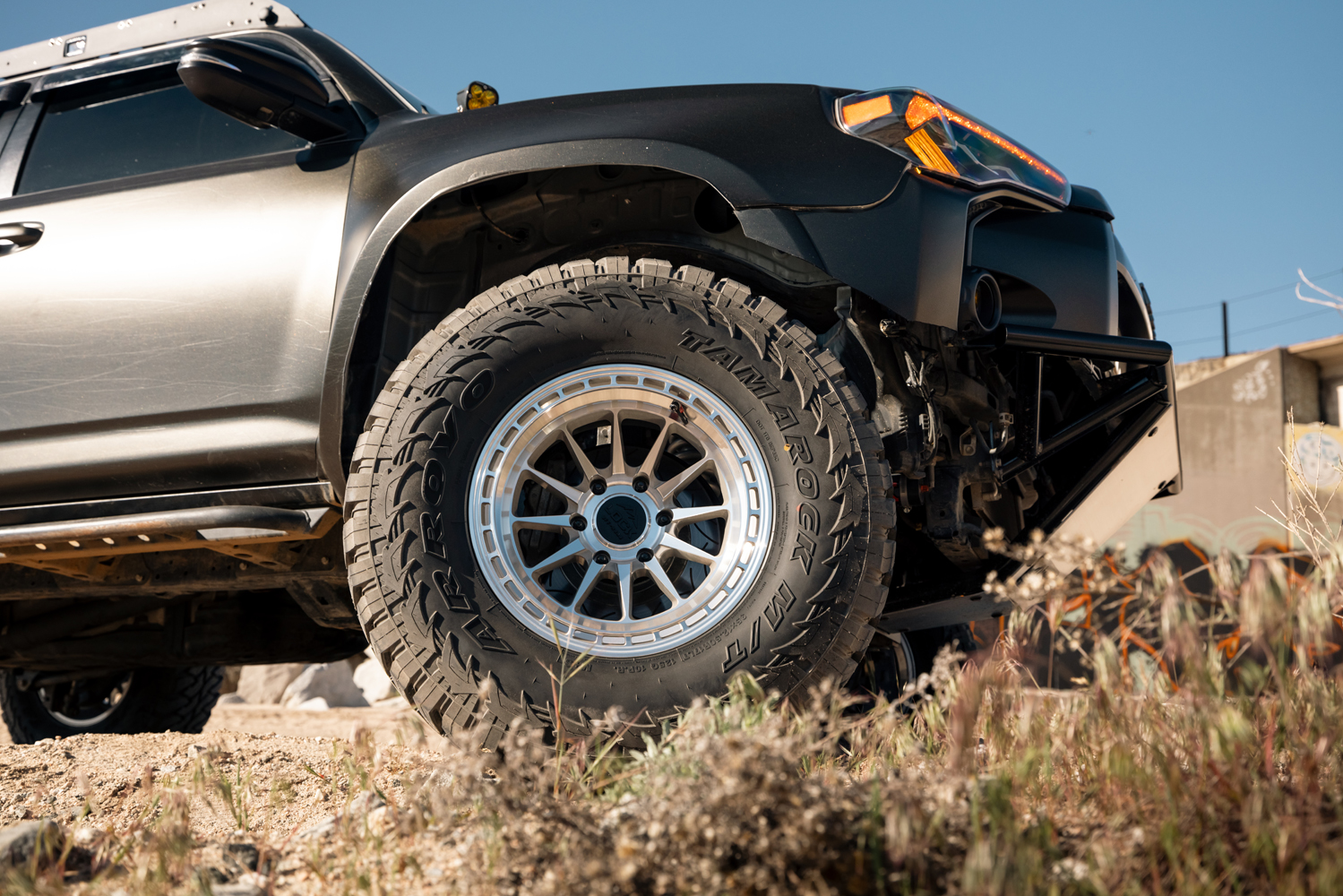
Picking out the right wheel size for your 4Runner isn’t just a task, it’s a blend of practicality and showcasing your unique style. Whether you’re taking your first steps into the off-road scene or a seasoned enthusiast, this comparison between 17″ vs. 18″ wheels is for every 4Runner owner out there as there are pros and cons to each.
Your wheels aren’t just circles of rubber and metal; they’re the heroes of your off-road adventures. Whether you’re conquering mud and rocks, or simply enjoying the wilderness drive, they are quite literally where the rubber meets the road.
For those just starting out, we’re laying down the basics so you can confidently step into the off-road world. And for the off-road pros, we’re diving into the details that can fine-tune your 4Runner experience.
Table Of Contents
Off-Road Performance

When it comes to off-road performance, wheel size can be the game-changer that defines your 4Runner’s capabilities. Let’s break down the specifics so you can make an informed decision.
Traction & Comfort
The sidewall dimensions of a tire directly impact its capacity to dampen shocks and withstand impacts. Wheels measuring 17 inches in diameter provide greater sidewall height relative to the overall tire diameter, thus exhibiting increased flexibility compared to 18-inch wheels, particularly when deflated. Enhanced flexibility enables the tire to adapt more effectively to rugged terrain, improving off-road traction and ride comfort.
The smaller sidewall dimensions typical of 18-inch wheels result in increased stiffness, leading to a slightly firmer ride and enhanced responsiveness when driving on paved surfaces.
Weight
In general, 17-inch wheels are often lighter compared to their 18-inch counterparts. This reduced weight can positively impact the vehicle’s unsprung mass, enhancing the suspension’s capacity to swiftly respond to terrain inconsistencies. As a consequence, handling can be notably improved, particularly in demanding off-road scenarios characterized by unpredictable terrain variations.\
In short, 17-inch wheels are great for off-roading because they give better traction and are lighter. On the other hand, 18-inch wheels look sleeker and handle well on regular roads.
Aesthetics

In the grand scheme of things, loving the way your 4Runner looks is paramount. It’s not just about functionality, it’s about making a statement on the road just as much as on the trails.
Size Perception
The 17″ wheels, with their slightly smaller profile, offer advantages off-road and can showcase that rugged appeal, especially when tackling challenging terrains. On the flip side, some people like the look of factory 18″ wheels which is why so many aftermarket wheel manufactures make 18″ wheels in addition to 17″ wheels. It’s really about personal preference on this one.
Aesthetic Impact
17″ wheels give off a traditional, robust charm, while 18″ wheels portray sophistication from the factory. It’s not just about the wheels, it’s about your style on the road. When I walk out to my 4Runner, I always stop for a second and admire my build.
Tire Options
Considering tire options is a big part of choosing your wheels. 17″ wheels generally have more off-road tire choices. However, there are still plenty of off-road tires for 18″ wheels as well.
In the end, your 4Runner’s build is like a canvas or a representation of yourself. If you’re not navigating hardcore trails regularly, choosing between 17″ and 18″ wheels is purely a personal preference. 17″ wheels are definitely what a large majority of 4Runner owners have, so do you want to blend in with the crowd or for your build to stand out?
Practical Considerations

LOCK OFFROAD BAJA | 17X9.0 | -12mm | 4.530 Backspace | 32 LB
Alright, let’s get down to the nitty-gritty, the practical side of choosing the right set of wheels for your 4Runner.
Terrain
If you find yourself more often cruising down city streets or suburban roads rather than on rugged trails, the 18″ wheels might just be your sweet spot. They generally offer better on-road handling and could make your daily commute a bit more engaging. On the flip side, if you’re the weekend warrior who loves nothing more than kicking up some dirt on challenging terrains, 17″ wheels might be your best bet.
Tire Availability
As I said earlier, 17″ wheels often have a broader selection of off-road tires. This is great news for those who crave that extra traction when venturing off the beaten path. Meanwhile, 18″ wheels have a slightly more limited tire range, but they do open the door to a variety of street-oriented tires for your urban adventures.
You can still get plenty of off-road tires with 18″ wheels, but you might have less of a selection if you just walk into a tire shop. I currently have 32″ Nitto Ridge Grapplers on 18″ Method wheels.
Weight
Generally, larger wheels are heavier. If shaving off every possible ounce for improved fuel efficiency is your priority, 17″ wheels might be the way to go. However, they still won’t give your 4Runner 30 MPG.
Cost
Last but not least, let’s touch on those Benjamins and your budget. Larger wheels usually come with a higher price tag, not just for the wheels themselves but also for the tires. If keeping costs in check is a priority, 17″ wheels might leave a bit more room in your wallet because there are so many wheel/tires options in this size. Of course, this can vary largely depending on the wheel brand.
Final Thoughts

Selecting between 17″ and 18″ wheels for your 4Runner is a personal journey, blending functionality with your unique style.
As you compare their off-road performance, aesthetics, and practical considerations, keep in mind that the differences, while not huge, do still exist. Traction and weight favor 17″ wheels for off-road enthusiasts, however, 18″ wheels provide a more stylish look that stands out and performs better on-road, in my opinion.
In the end, it’s not just about wheels, it’s about crafting a build that reflects your individuality and brings you joy every time you set out on your 4Runner adventures.

Those comments about the weight are unclear. One should compare the total weight of a rim + tire. For example, we take a 35″ wheel:
1) 35×12.5xR17 + 17″ rim = X kg
2) 35×12.5xR18 + 18″ rim = Y kg
Now, compare X and Y – only this makes sense.